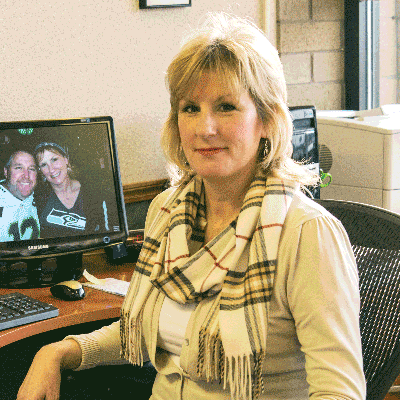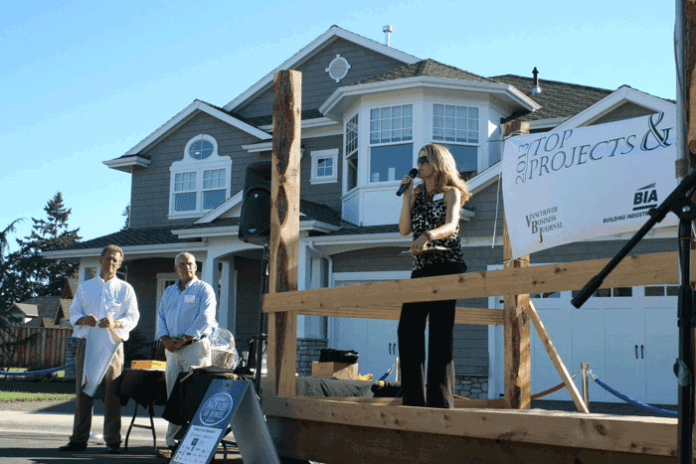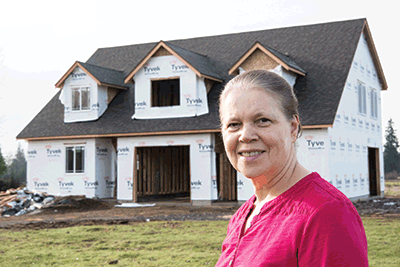Some industries have been clearly dominated by one gender or the other; perhaps no industry more so than construction. However, in Southwest Washington, women are finding their place and respect amongst their male counterparts.
Leading to construction
As with most careers, there are a variety of paths that lead us to our chosen industry.
“I have always been fascinated with building things,” says Paige Spratt, construction attorney with Immix Law Group PC. “My Dad was a general contractor, I went to school for construction management and even worked in the field after college.”
Darcy Altizer, the recently-appointed executive director of Southwest Washington Contractor’s Association (SWCA), says that it was her passion for economic development that led her to construction.
For Loraine Nordahl, she jumped in at her husband Arne’s side and found ways that she could impact the business. She and her husband own Nordahl Nordic Homes Inc. in Vancouver.
Roles
Spratt notes that the journey for women in construction is far from over.
“In leadership roles, I think women have very much found their place and receive respect. With skilled labor jobs, not so much.”
Avaly Scarpelli, executive director for the Building Industry Association (BIA) of Clark County agrees.
“Leadership, architecture and design are all areas where we see women being well-received and owning strong roles. In the skilled labor market, we haven’t really made it yet. There is opportunity, though,” she said.
With skilled labor shortages looming, the chance for women to pick up a hammer or wrench may be at hand.
“The home is the women’s domain,” Nordahl says with a grin in her voice. In customer facing roles and design input, she sees women really being able to make their mark.
Scarpelli sees growth in community and customer outreach, design, materials consulting and sales roles, where women have taken solid footing in the construction industry.
“Women are often the decision maker when it comes to buying a home. It is an emotional process, by being able to offer that perspective, make that emotional connection, it is an advantage to having a woman involved in the construction purchase and design,” Scarpelli adds.
Challenges
Swimming against the tide of norms cannot be an easy task. Paige Spratt assures, it isn’t.
“Early on, the stigma was especially tough. My freshman year, I tried to get hired on jobs and gain experience. I was called a distraction and my skills were questioned. I couldn’t get a job,” she shares.
Once she graduated and wrangled a trade job, she admits the physical part of construction labor was difficult, but she was still given the opportunity to learn.
“It is tough to break into an established network,” says Scarpelli. “Contractors already have their trusted suppliers and subs. The successful females are the ones who pound the pavement, build relationships and get face time.”
Nationwide, census data pulled and tabulated by the National Association of Home Builders tells a cautionary note. With the rise in executive and sales roles, perception of more women in the industry has grown, but females represent only seven percent of the industry, the same percentage as in 2010.
The seven percent doesn’t include husband-and-wife teams that Scarpelli says account for much of the growth.
“Women are often the face of the company. They are active in the associations and in the community,” she says.
These opportunities, however, aid in the acceleration of acceptance of women. They are seen, heard and produce in these partnered roles.
“If the women in the industry are competent, they will be well-received,” Nordahl says, noting especially here in Southwest Washington.
Our environment
What makes Southwest Washington such fertile ground for gender busting the construction industry?
“Our environment is fantastic,” says Spratts. “The Pacific Northwest, the West Coast, [and] Vancouver are very women-friendly. Whether taking over the family business or starting up on their own, people are open to giving women opportunities.”
Scarpelli concurs, “We are different here. Women in these roles have a lot more respect, opportunity.”
With a role that takes her across the nation working in different regions, Scarpelli sees that the Northwest is more open to women in construction. She notes that even in executive roles at the association level, different geographies are still very male-dominated.
 “Our community has experienced bad economic effects, especially in our industry,” adds Altizer. “It was time to start looking at things differently. I think that made us more open to disregard the status quo, take action.”
“Our community has experienced bad economic effects, especially in our industry,” adds Altizer. “It was time to start looking at things differently. I think that made us more open to disregard the status quo, take action.”
The future
Having constructed their path in leadership and executive roles, what is the future for women in the industry?
“As the skilled labor pool declines, opportunity for women to fill those roles will be there,” Spratt says.
Scarpelli agrees, but questions whether that opportunity will be seized.
“The recession, particularly in the construction industry, hit hard. It made a lot of people turn to other industries. Women who considered the skilled labor market likely would have too.”
“Women need to be encouraged to enter into the construction industry, tackle skilled labor roles,” Spratt asserts. “If they enjoy it and are good at it, there will be jobs for them.”





